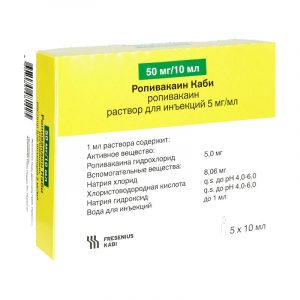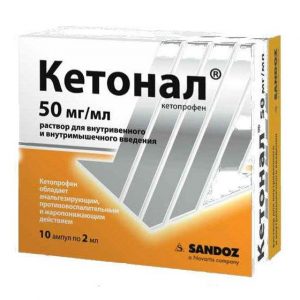Description
Release form
effervescent tablets
Packing
10 pcs.
Pharmacological action
Aspirin is a non-steroidal anti-inflammatory drug (NSAID), non-narcotic analgesic, antiplatelet agent. It has an antipyretic, analgesic and anti-inflammatory effect, and also reduces platelet aggregation.
The main mechanism of action of acetylsalicylic acid is the irreversible inactivation of the cyclooxygenase enzyme, as a result of which the synthesis of prostaglandins, prostacyclins and thromboxane is disrupted.
Due to a decrease in prostaglandin production, the pyrogenic effect of prostaglandins on thermoregulation centers is reduced. Moreover, the sensitizing effect of prostaglandins on sensitive nerve endings decreases (which leads to a decrease in their sensitivity to pain mediators).
Irreversible thromboxane A2 synthesis in platelets causes the antiplatelet effect of acetylsalicylic acid.
However, it should be borne in mind that acetylsalicylic acid also blocks the cyclooxygenase of endothelial cells in which prostacyclin, which has antiplatelet activity, is synthesized.
However, endothelial cell cyclooxygenase is less sensitive to the action of acetylsalicylic acid and, unlike the platelet enzyme, is blocked reversibly.
Adding vitamin C to the drug increases the body’s resistance, reduces vascular permeability.
Indications
– symptomatic treatment of moderate or mild pain of various origins (headache, toothache, migraine, neuralgia, muscle pain, pain during menstruation)
– febrile syndrome in colds and other infectious and inflammatory diseases.
Contraindications
Children’s age (up to 15 years) hypersensitivity to any components of the drug and other NSAIDs erosive and ulcerative lesions of the gastrointestinal tract (in the acute phase), gastrointestinal bleeding inflammatory bowel disease in the acute stage, complete or incomplete combination of bronchial asthma recurrent polyposis of the nasal mucosa and paranasal sinuses and intolerance to acetylsalicylic acid or other NSAIDs, including a history of combined use of methotrexate at a dose of 15 mg per week and more pronounced impaired liver function, renal expressed impaired cardiac function hemorrhagic diathesis hemophilia, thrombocytopenia deficiency of glucose-6-phosphate dehydrogenase vitamin K deficiency cerebrovascular or other bleeding simultaneous administration of oral anticoral anticoagulant acid in a dose exceeding 3 g per day pregnancy (I and III trimesters), the period of breastfeeding.
Caution: with concomitant therapy with anticoagulants, gout, peptic ulcer and / or duodenal ulcer (history), erosive gastritis, and a tendency to gastrointestinal bleeding, impaired liver function, hypothrombinemia, hypovitaminosis K, anemia, predispositions body fluids (including impaired heart function, arterial hypertension), thyrotoxicosis, tendency to calcium-oxalate nephrolithiasis. Bronchial asthma, nasal polyposis, hay fever, drug allergy, hypermenorrhea.
Special instructions
The drug is not prescribed as an antipyretic to children under 15 years old with acute respiratory infections caused by viral infections, because of the risk of Reye’s syndrome.
Acetylsalicylic acid reduces the excretion of uric acid from the body, which can cause an acute attack of gout in susceptible patients.
Drug Interactions Possible.
Glucocorticosteroids, alcohol increase the damaging effect on the gastrointestinal mucosa. One dose of the drug contains 933 mg of sodium, which should be considered in patients receiving a salt-free diet.
In order to reduce the risk of increased bleeding, the drug should be discontinued 4-8 days before the planned surgical intervention.
Composition
1 tablet contains:
– acetylsalicylic acid 400 mg,
– ascorbic acid 240 mg.
Dosage and Administration
Inside. Dissolve an effervescent tablet in a glass of water and drink it after a meal.
In case of mild to moderate pain syndrome and febrile conditions, a single dose is 1–2 effervescent tablets, the maximum single dose is 2 effervescent tablets, and the maximum daily dose should not exceed 6 tablets. The intervals between doses of the drug should be at least 4 hours.
The duration of treatment (without consulting a doctor) should not exceed 3-5 days.
In order to reduce the risk of adverse reactions from the gastrointestinal tract, the minimum effective dose should be used with the shortest course of treatment.
Side effects
Disorders of the gastrointestinal tract: often – decreased appetite rarely – diarrhea frequency unknown – dyspepsia, abdominal pain, nausea, vomiting, obvious (black stool, bloody vomiting) or hidden signs of gastrointestinal bleeding, which can lead to iron deficiency anemia, erosive and ulcerative lesions (including with perforation) of the gastrointestinal tract.
Disorders of the nervous system: infrequently – headache frequency unknown – dizziness, tinnitus (usually signs of an overdose).
Disorders from the blood and lymphatic system: frequency unknown – hemorrhagic syndrome, thrombocytopenia. Bleeding can lead to acute or chronic anemia, iron deficiency anemia with appropriate laboratory and clinical manifestations (asthenia, pallor, hypoperfusion). In patients with glucose-6-phosphate dehydrogenase deficiency, hemolysis and hemolytic anemia may occur.
Disorders of the kidneys and urinary tract: the frequency is unknown – when used in high doses – hyperoxaluria and the formation of urinary stones from calcium oxalate, damage to the glomerular apparatus of the kidneys.
Immune system disorders: unknown frequency – skin rash, rhinitis, anaphylactic reactions, bronchospasm, Quincke’s edema, the formation of an aspirin triad (bronchial asthma, polypous rhinosinusitis and intolerance to acetylsalicylic acid and pyrazolone drugs).
Disorders from the liver and biliary tract: very rarely – Reye’s syndrome (acute fatty degeneration of the liver with developed acute liver failure and encephalopathy) rarely – impaired liver function (increased hepatic transaminases).
If you experience these symptoms, it is recommended that you stop taking the drug and consult your doctor immediately.
Drug Interactions
With the combined use of Aspirin and anticoagulants, the risk of bleeding increases.
With the simultaneous use of the drug Aspirin and NSAIDs, the main and side effects of the latter are enhanced.
Against the background of Aspirin treatment, the side effect of methotrexate is exacerbated.
With the simultaneous use of Aspirin and oral hypoglycemic drugs – sulfonylurea derivatives, the hypoglycemic effect intensifies.
With simultaneous use with corticosteroids, the risk of gastrointestinal bleeding increases.
With the simultaneous use of Aspirin weakens the effect of spironolactone, furosemide, antihypertensive agents, as well as anti-gout agents that promote the excretion of uric acid.
Prescribing antacids during treatment with Aspirin (especially in doses of more than 3 g for adults and more than 1.5 g for children) can cause a decrease in high stable levels of salicylate in the blood.
Overdose
Symptoms: nausea, vomiting, epigastric pain, and (especially in children and elderly patients) tinnitus, dizziness, headaches, decreased vision and hearing are possible with mild intoxication.
With a significant overdose appear unconscious thinking, confusion, drowsiness, collapse, tremor, shortness of breath, asphyxiation, dehydration, hyperthermia, coma, alkaline reaction of urine, metabolic acidosis, respiratory (gas) alkalosis, disorders.
Adult acetylsalicylic acid lethal dose for adults – more than 10 g, for children – more than 3 years
Treatment: depending on the state of acid-base equilibrium and electrolyte balance infusion of sodium hydrogen carbonate, sodium citrate or sodium lactate is carried out.
Storage Conditions
The product should be stored at room temperature.
Shelf life
3 years.
Deystvuyushtee
acetylsalicylic acid, Ascorbic acid
Terms and conditions
without prescription
dosage form
tablets soluble
For prescription
Prescription
For children over 15 years old, Pregnant only for a doctor II trimester adults




